I’ve been called a distressing queen for a long time. It goes way back to my paper crafting days… I love the look and I love finding new ways to create that old aged feel. Over the years, I have found my groove in making the distressing look authentic and worn naturally. You can too!!
Distressing is definitely a personal touch. And one of the techniques you will have to find your touch through lots of trial and error. The wonderful thing about chalk paint- if you take too much off you can put it right back on!! The techniques I will share with you are all geared towards use with chalk paint. You can of course use the same techniques with latex and oil it just is a whole lot more elbow grease.
I have a piece in my entry that I painted years ago- where I used a brown paint to distress… I keep untouched just as it is… I still get a tons of compliments that must be the color. As a scrapbooker, I know it’s one of those you just can’t redo!! It’s where you started!! I’ll share it with you.
Over time I found my groove. I use sanding, wet distress, and various waxing techniques to distress now. I’ll do a post on waxing tomorrow. But for now I will try and give you some tips on sanding and wet distressing.
When finding your touch a lot of it come with finding the right tools to start with. I use Norton sandpaper. I like the thickness of the sheets and the texture is perfect for me. I don’t have a heavy hand when I sand so it just works perfectly for me. I start with a sanding block and I use it until the grit isn’t working and I then switch over to my sheets and tear them into quarters or even down to 6 pieces and wrap my blocks. Ultimate in saving money and recycling. I never use a mouse when I am sanding during the distressing… personal preference. I don’t like the control you give up and I don’t like the look that the orbital markings leave. In tight areas and lots of details I even rip off a piece and use it on my thumb or wrap my index finger. It’s so important to start soft and find your strength… {Working smarter not harder. You don’t want to have to put back if you don’t need to}. The other thing to figure out is the grit you want to use. It may seem simple but larger the number grit the finer the paper. Larger the number the rougher the grit.
I use a 220 between coats to get a really smooth surface. I use no lower than a 150 to distress… that is my personal preference. I don’t like the scratchy look that you can get with 80 and 60 grit. Those grits work well with latex and oil but with chalk paint it just isn’t necessary. I use all the way up to 400 and 600 grit {automotive area in hardware store- I have found it in Ace and in Harbor Freight}
Pictures below show various looks that have distressed techniques on them. Some are very simple and what is considered very “light” along the edges nothing too drastic. Others are very distressed and took a lot of different techniques to achieve that look. In heavier distressing you will notice there are multiple colors achieving that layered look!! That’s the look I personally LOVE!!
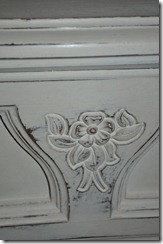

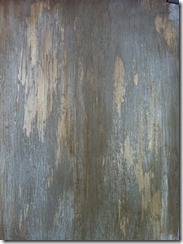
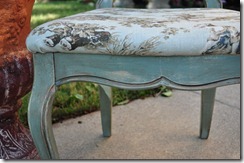
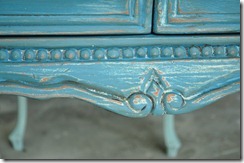
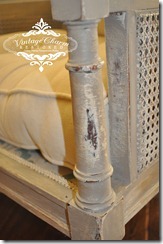
Another trick I love to use is baby wipes or Clorox type wipes. I love wet distressing. You can get a really smooth look while working with almost dry but still a little wet paint. {If it’s completely dry it just take a little more work.} I don’t use this every time but when I am going for that layered or French look I use it almost every time!! It doesn’t make it easy- it can take a lot of wipes and a lot of time but it’s worth the look to me. Another tool I use to wet distress when paint is completely dry is a magic eraser. Dip it in a little water and you have a sanding block!! Its got a fine abrasion quality and it keeps the dust down from the chalk paint.
Another question I get all the time is “do I need to wax before I distress??” No!! I am all about saving time and product. I don’t feel like waxing before you distress is of any benefit to the end results. I have done it both ways and other than dust plumes being less; there is no difference in the end finish appearance or durability. Distressing and taking off wax only to put wax back on the areas you just took off doesn’t make much sense to me…. And that’s my humble opinion!!
Distressing doesn’t have to be hard but it will take practice to make it second nature to you!! So go for it and keep on trying!!
Thanks for stopping by and check back tomorrow for some fun tips on waxing!! I enjoy your feedback so feel free to ask a question or leave a comment!!
Happy Painting!!

I love that you share your talents with others! Thank you!
Thank you for your kind words!!~ Lori
[…] to show you more pictures of the set… It was all done with wet distressing that I spoke of here.. I used a full deal of wipes before it was all done!! But I love the look it gave. It was so […]
Lori, thank you so much for sharing your techniques with us! It is very kind of you!
I’d like to try “wet distressing” method, but I am wondering if I should paint a coat of black paint to cover the orange looking stain of my furniture? I want to make sure that when I do the distressing it’s the pretty color that peaks through…not the orange one. Or does it not really matter?
Thank you!